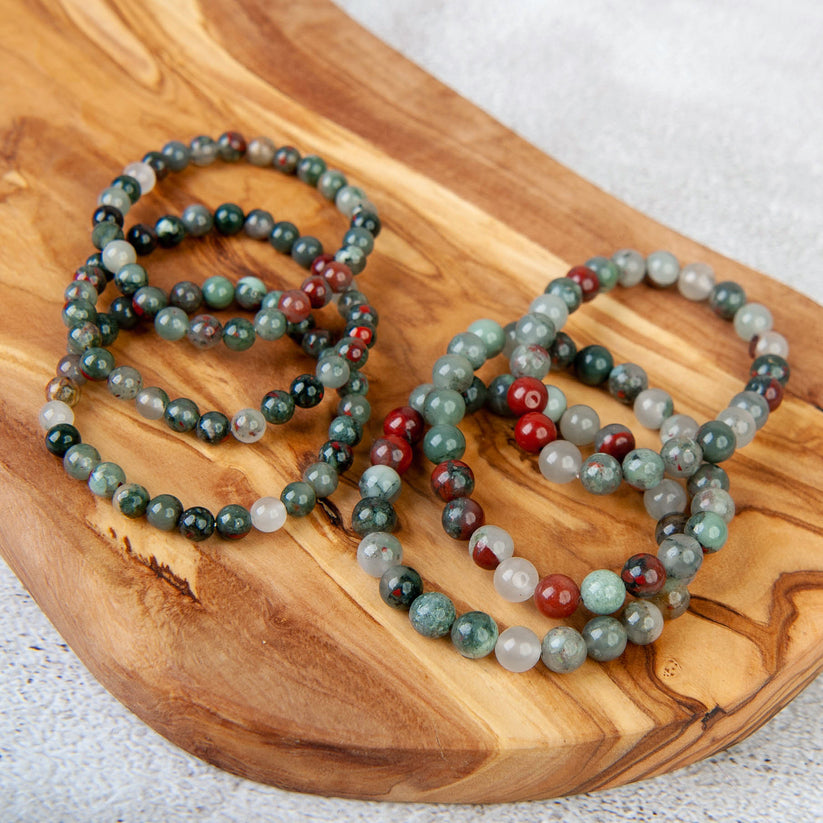Types of Rocks
Article by Rezolutions Design
$0.00 USD
FREE SCOOP OF TUMBLED STONES ON ORDERS OVER
Article by Rezolutions Design

Rocks and minerals are all around us! They make up the very foundation of our planet and are used in a variety of ways, from building houses to creating jewelry and electronics. These building blocks define how our beautiful landscapes are formed, and they provide valuable resources needed within our environment.
You can see rocks inside your house, in your yard, on your street, on a country road, everywhere you look. Glass, marble, chalk, pencil lead, pebbles, and sandpaper are all made from rocks. No matter where you are, rocks are close by!
This makes rocks fascinating to learn about and collect!
Most adults and children naturally love rocks and minerals because they are so colorful, sparkly, and interesting to touch.
Rocks, on the other hand, are a little more difficult to define. A rock can be made of just one mineral or, as is most often the case, a combination of many different minerals.
Surprisingly, rocks are not made equal.
Let's explore the three main types of rocks: igneous, sedimentary, and metamorphic, so you can start to classify the rocks you see on your adventures.
A rock is a solid, inorganic, natural material made up of two or more minerals.
But what are minerals?
Well, a mineral is a naturally occurring inorganic solid with definite chemical composition and crystal structure.
Minerals are crystalline in structure, which means they have a regular repeating pattern. This repeating pattern gives each mineral its own unique shape, color, and hardness. They contribute to the beauty and diversity of our planet. Scientists have identified more than 5.000 types of minerals and are constantly discovering new ones.
Rocks come in many different colors, depending on their chemical makeup. The most common colors are white, gray, black, brown, and red. But you can also find blue, green, yellow, orange, and purple rocks!
For example, quartzite is usually white or gray, granite is pink, red, or gray, and limestone is white, gray, or black.
Rocks are classified by how they form. There are three main types of rocks: igneous, sedimentary, and metamorphic.
Igneous rocks are made from solidified lava or magma. Lava is molten rock that has erupted or flowed from a volcano. Magma is molten rock that is still underground.
When lava or magma cools, minerals begin to crystallize and grow into larger rocks. Igneous rocks can be either intrusive or extrusive.
Intrusive igneous rocks form when magma cools slowly deep underground. The magma is unable to flow or erupt. so it cools and solidifies where it is.
As the magma cools, minerals begin to crystallize slowly and grow into larger rocks. The longer the magma cools, the larger the crystals will grow.
Granite is an example of intrusive igneous rock. It has large crystals that can be seen with the naked eye.
Extrusive igneous rocks form when magma is ejected from a volcano or seafloor fissures during an eruption. Since the magma cools quickly at the surface, the crystals do not have time to grow very large.
Sometimes, a residual portion of the matrix can fail to crystallize at all, instead of becoming a glassy material called obsidian.
If the magma has a lot of gaseous bubbles, it can become a lightweight rock called pumice. The trapped air forms bubble-shaped cavities in the rock.
Basalt is an example of extrusive igneous rock; it has small, fine-grained (aphanitic) particles that can only be seen with a magnifying glass or microscope.
Sedimentary rocks are made from pieces of other rocks that have been broken down by the wind water. or ice. These pieces are called sediment. Overtime, the sediments build up and harden into rock. These rocks are formed in four ways:
There are three main types of sedimentary rocks: clastic, chemical, and organic.
-Clastic Sedimentary Rocks
Clastic sedimentary rocks are made from pieces of preexisting rocks that have been broken down by the forces of wind, water, or ice. The sediment is transported to a new location and then deposited. Over time, the sediments build up and harden into rock.
There are two main types of clastic sedimentary rocks: sandstone and shale.
Sandstone is made from pieces of rock called sand. Sandstone is usually light-colored because the small pieces of rock are light-colored.
Shale is made from smaller pieces of rock, called clay. Shale is usually dark-colored because the clay is dark-colored.
-Chemical Sedimentary Rocks
Chemical sedimentary rocks are made from minerals that have been dissolved in water. The water evaporates, leaving behind the minerals. Over time, the minerals build up and harden into rock.
There are two main types of chemical sedimentary rocks: evaporites and carbonates.
Evaporites form when minerals are left behind after water evaporates. The most common evaporite minerals are halite (sodium chloride), gypsum (calcium sulfate), and potassium sulfate.
Carbonates form when minerals combine with carbon dioxide in water. The most common carbonate minerals are calcite (calcium carbonate) and dolomite (calcium magnesium carbonate).
The third type of chemical sedimentary rock, Ironstone, is made from iron-rich minerals such as hematite and goethite.
-Organic (Biochemical) Sedimentary Rocks
Organic sedimentary rocks are made from plant and animal remains. The remains are buried in sediments and then fossilized. Over time, the sediments build up, decompose and harden into rock.
The organic material is transformed into rock through a process known as diagenesis. The most common biochemical sedimentary rocks are coal and limestone.
Metamorphic rocks are made from other rocks that have been changed by heat, pressure, or chemical activity. The word "metamorphosis" means "change in form." Metamorphic rocks have changed from one rock type into another.
There are two main types of metamorphic rocks: foliated and non-foliated.
- Foliated Metamorphic Rocks: Foliated metamorphic rocks have a layered or banded appearance. The layers are caused by the alignment of flat or elongated minerals, such as mica. The most common foliated metamorphic rocks are shale, claystone, slate, phyllite, schist, and gneiss.
- Non-Foliated Metamorphic Rocks: Non-foliated metamorphic rocks do not have a layered or banded appearance. The minerals in non-foliated rocks are usually arranged in random patterns. The most common non-foliated metamorphic rocks are quartzite, marble, and hornfels.
Rocks never remain the same, and they are always changing with time. The changes that rocks undergo are part of the rock cycle. The rock cycle is a never-ending, natural process that occurs over long periods of time.
Ideally, the rock cycle looks like this:
-Igneous rocks are formed when molten rock (magma) cools and hardens. Over time, the rock is weathered and eroded into sediments.
-Sedimentary rocks are formed from the weathering and erosion of preexisting rocks. The sediments are transported to a new location and then deposited.
-Over time, the sediments build up and harden into rock.
Metamorphic rocks are formed when sedimentary or igneous rocks are changed by heat, pressure, or chemical activity.
But in reality, the rock cycle is much more complicated than that! Rocks can change from one type into another and back again many times.
For example, the sedimentary rock can be weathered and eroded to form new sediments.
The sediments can then be transported to a new location and deposited. The sediments can then be buried, heated, and changed into a metamorphic rock. The metamorphic rock can then be uplifted and eroded to form new sediments, And the cycle starts all over again!
Rocks are made from minerals and organic matter, and they come in many different shapes, sizes, and colors. Rocks can be found on the surface of the Earth, under the ground, and even underwater!
Rocks can be classified into three main categories: igneous, sedimentary, and metamorphic, depending on how they are formed. They can go through the rock cycle where they change from one type of rock into another and back again many times.
Pocks are an important part of the Earth and provide us with many resources we use in our everyday lives. So the next time you see a rock, take a closer look and think about all the different things it can tell us about the Earth!

Sign up now and enjoy a 10% discount on your first purchase. Start your mining adventure today!
Sign up now and enjoy a 10% discount on your first purchase.
Explore
Learn
Explore
Learn
Get In Touch
Sign up now and enjoy a 10% discount on your first purchase.
© 2025 DECLAN'S MINING CO. - ALL RIGHTS RESERVED.
